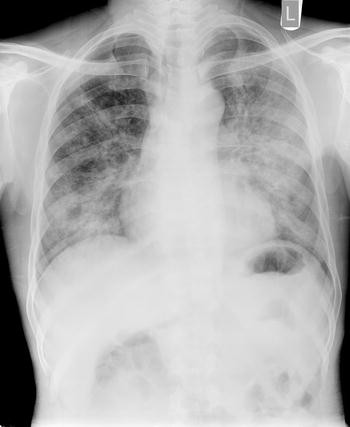

Infectious, neoplastic and autoimmune pathologies were excluded, whereas a broncho-alveolar lavage revealed an accumulation of lipids in the cytoplasm of the alveolar macrophages. The patient was treated with empiric antibiotics and systemic steroids for 10 days.

A CT scan showed a consolidation area with air bronchogram in the middle lobe and non-calcific bilateral nodules, which could be attributed to community-acquired pneumonia.

This highlights a need to undertake appropriately designed studies to investigate which is the most appropriate treatment regimen that trades off benefits and risks of prolonged corticosteroid administration.Ī 59-year-old female ex-smoker with 40 pack year smoking history and a 5-year current e-cigarette (EC) use history, presented with progressive dyspnea on exertion and daily cough for 2 months. Only one study provided information regarding treatment side-effects.Ĭonclusion: The findings of this systematic review show the low quality data supporting the use of corticosteroids for the treatment of organizing pneumonia. On those that started treatment, 226 (36%) presented a relapse of the disease during follow-up. Most of the patients were started on treatment with systemic corticosteroids – a total of 627 (30%-100% depending on the series), but there was a great heterogeneity regarding drug, doses and duration. Results: A total of 135 publications were selected and finally 13 studies with 849 patients were included in the review: 12 retrospective observational studies and a single prospective observational study. We collected data including: demographics, clinical data, diagnostic procedures, aetiology, treatment regimen (drug, posology, duration, response) and evolution. Those studies with incomplete or insufficient data and case reports were excluded. Methods: A search was implemented in the PubMed database (Medline) for articles published in the last 20 years. Thus, we performed a systematic review of the literature on systemic corticosteroid treatment for organizing pneumonia. Introduction: Regardless corticosteroids are recommended for the treatment of Organizing Pneumonia there is limited evidence supporting this practice. OP diagnosis can be challenging and, if not considered, may lead to a delay in providing appropriate treatment to the patients, which can often lead to a prolonged hospital stay and poor outcomes. The patient was treated with oral prednisolone with clinical improvement and discharge one week after the beginning of the corticosteroid treatment. His clinical history, laboratory results, and CT images led to the diagnosis of OP, which was confirmed with a transbronchial lung biopsy. Chest CT revealed condensation foci of all pulmonary lobes. The patient was treated with multiple courses of antibiotics with no pathogen isolation. This report describes a 77-year-old male who presented to the hospital with nonproductive cough, myalgias, fever, and progressive weight loss after prolonged exposure to sodium hypochlorite. In most cases, the etiology is unknown but may be associated with infections, systemic disorders, exposure to industrial toxins and environmental pollutants, or even drug toxicity. Organizing pneumonia (OP) is a rare inflammatory lung disease with a difficult diagnosis and sparse mentions in the literature.


 0 kommentar(er)
0 kommentar(er)
